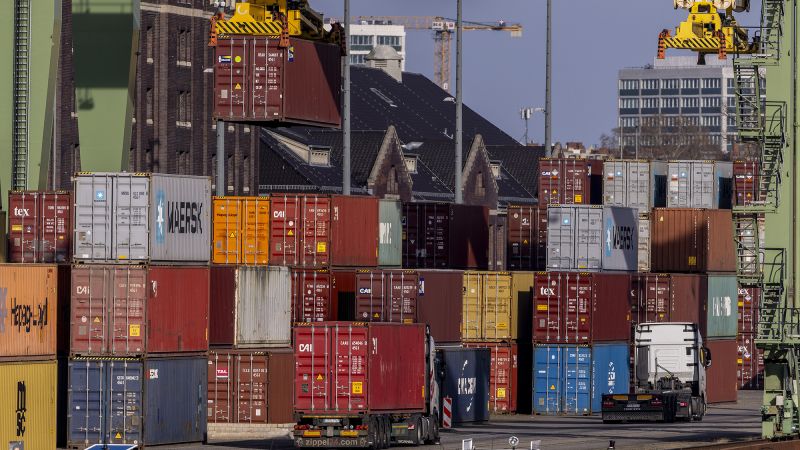In recent developments, the European Union (EU) has announced its intention to impose retaliatory tariffs on a range of American products, which notably includes everyday items such as toilet paper, soybeans, and eye makeup. This action comes as a direct response to stalled trade negotiations with the United States. The EU is taking this step to protect its economic interests and leverage negotiations with the U.S. government.
The bloc, consisting of 27 member states, published an extensive list of U.S. products earmarked for additional customs duties. If an agreement is not reached soon with the U.S., these tariffs could be set at a striking 25%. This move further escalates the ongoing trade tensions between the two global economic powerhouses and highlights the fragility of their trading relationships.
The backdrop of this trade conflict can be traced back to aggressive trade policies adopted by former U.S. President Donald Trump. His administration imposed significant tariffs on multiple trading partners, igniting a tit-for-tat cycle of tariffs that threaten to plunge various economies into recession. This situation has significant implications for both American and European markets, affecting countless sectors that rely on stable trade practices.
To provide a brief reprieve, the EU had suspended its initial countermeasures for a period of 90 days, following a similar pause by the U.S. concerning its reciprocal tariffs. Originally, the EU’s counter-tariffs were slated to take effect as a direct reaction against 25% tariffs on U.S. imports of steel and aluminum. The postponement indicated a willingness to negotiate, as expressed by the European Commission, which hoped to facilitate meaningful discussions between the EU and the U.S.
In a communiqué released on that Monday, the European Commission stated, “The European Union has paused its countermeasures on unjustified US trade tariffs to allow time and space for EU-US negotiations.” Nevertheless, they emphasized that if dialogues do not lead to satisfactory outcomes, punitive tariffs would inevitably come into play, impacting a wide array of approximately 400 identified U.S. products.
The products targeted by the EU’s impending tariffs extend beyond just everyday items. The analysis indicated that commodities like soybeans, a crucial agricultural export for the U.S., will also be at risk of steep import taxes, showcasing the intricate interdependencies of agriculture and trade. The EU’s list includes not only popular agricultural exports but also products integral to various industries, thereby broadening the potential economic ramifications of these tariffs.
Moreover, in tandem with the tariffs on steel and aluminum, the U.S. has likewise imposed substantial levies on European automobiles and automobile parts. A 25% tax was introduced on these items, coupled with a 20% reciprocal tariff on other imports from the EU, though this rate has recently been reduced to 10% for a temporary 90-day period. This back-and-forth has left both parties in a state of contemplation as they ponder their next steps in this escalating trade saga.
French Minister François Bayrou recently expressed concerns about these retaliatory measures, stating that America’s trading partners are compelled to undertake actions that are fraught with peril. “The president of the United States has unleashed a hurricane—whose consequences will not disappear anytime soon,” he remarked, addressing the gravity of the situation and the potential long-term impacts of the unresolved trade conflict.
In conclusion, the unfolding trade tensions between the EU and the U.S. reflect a complex landscape where economic diplomacy and national interests intersect. As both sides navigate the intricacies of trade policies and retaliation, the repercussions of these strategies will undoubtedly reverberate through global markets. With significant agricultural exports, everyday consumer goods, and automotive sectors hanging in the balance, the stakes are high for everyone involved. The current stand-off serves as a stark reminder of the interconnectedness of economic systems and the delicate nature of international trade relations.



